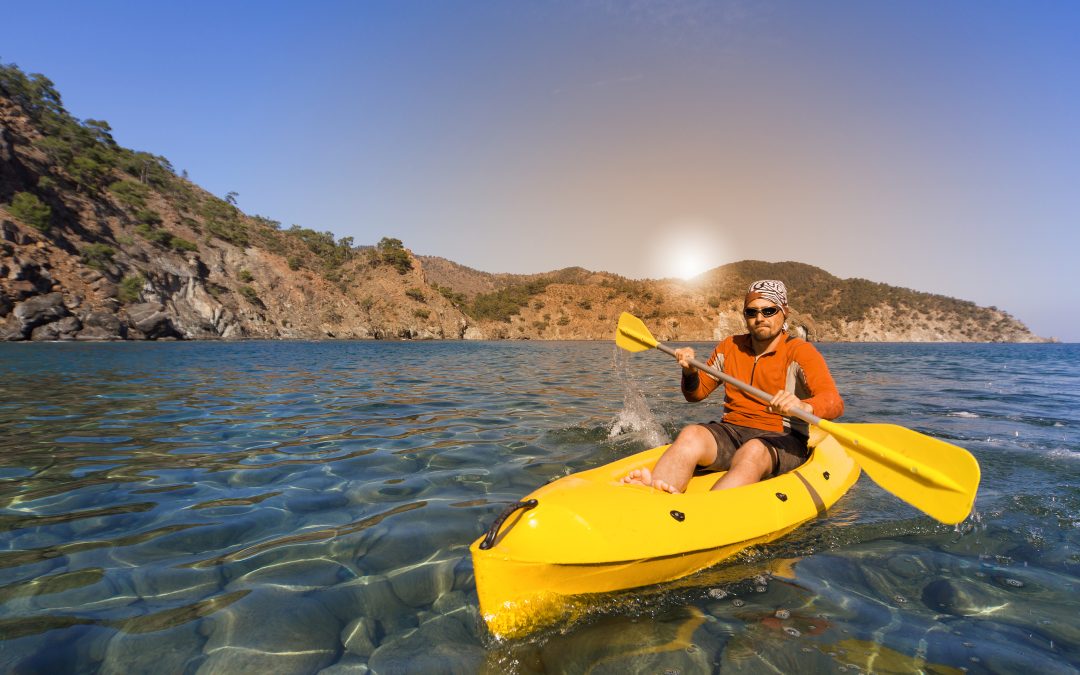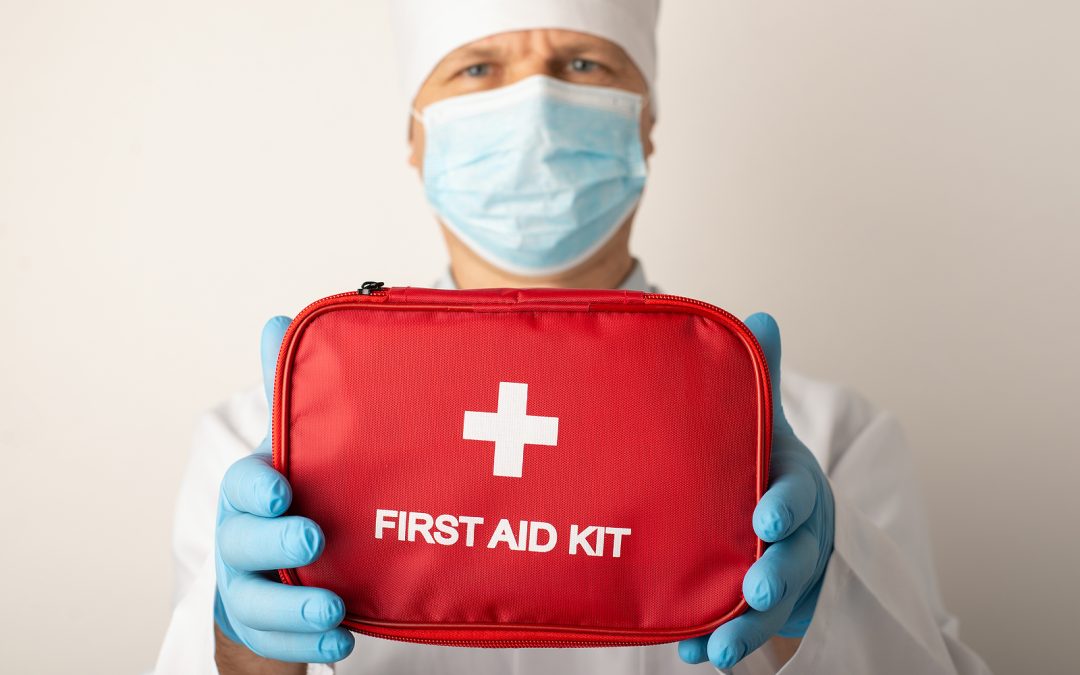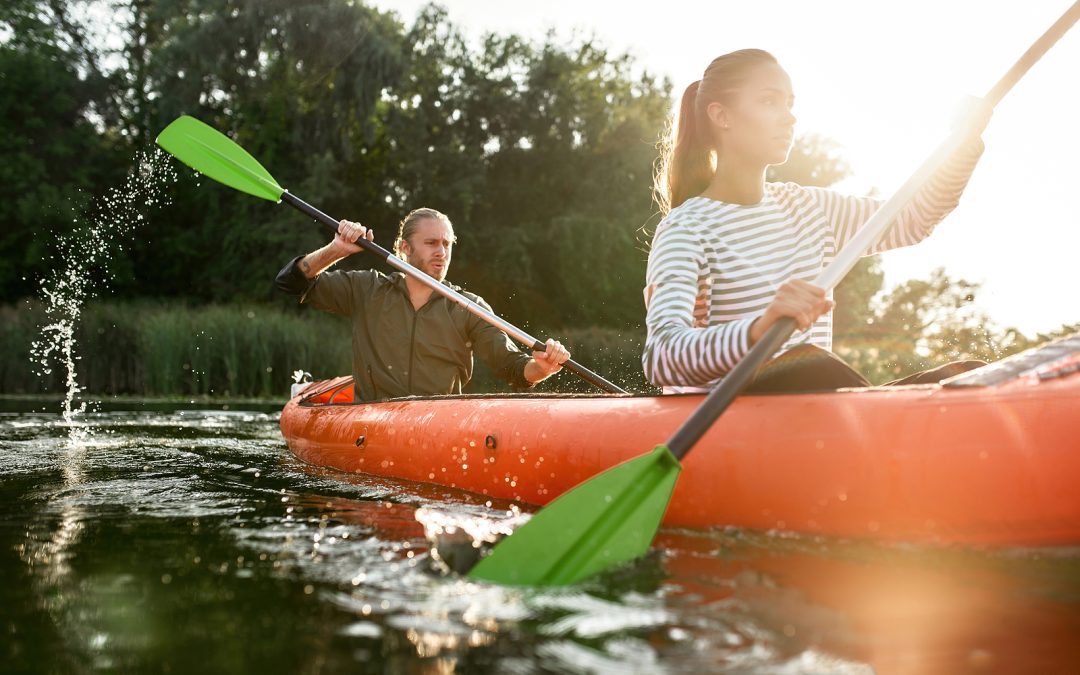Kayaking tours offer an exceptional opportunity for adventure seekers and nature enthusiasts to explore stunning waterways, but it is crucial to take weather conditions into account when planning such excursions. A comprehensive understanding of how different weather factors, such as wind speed, air and water temperature, and currents, impact kayaking safety and enjoyment is necessary for a successful trip.
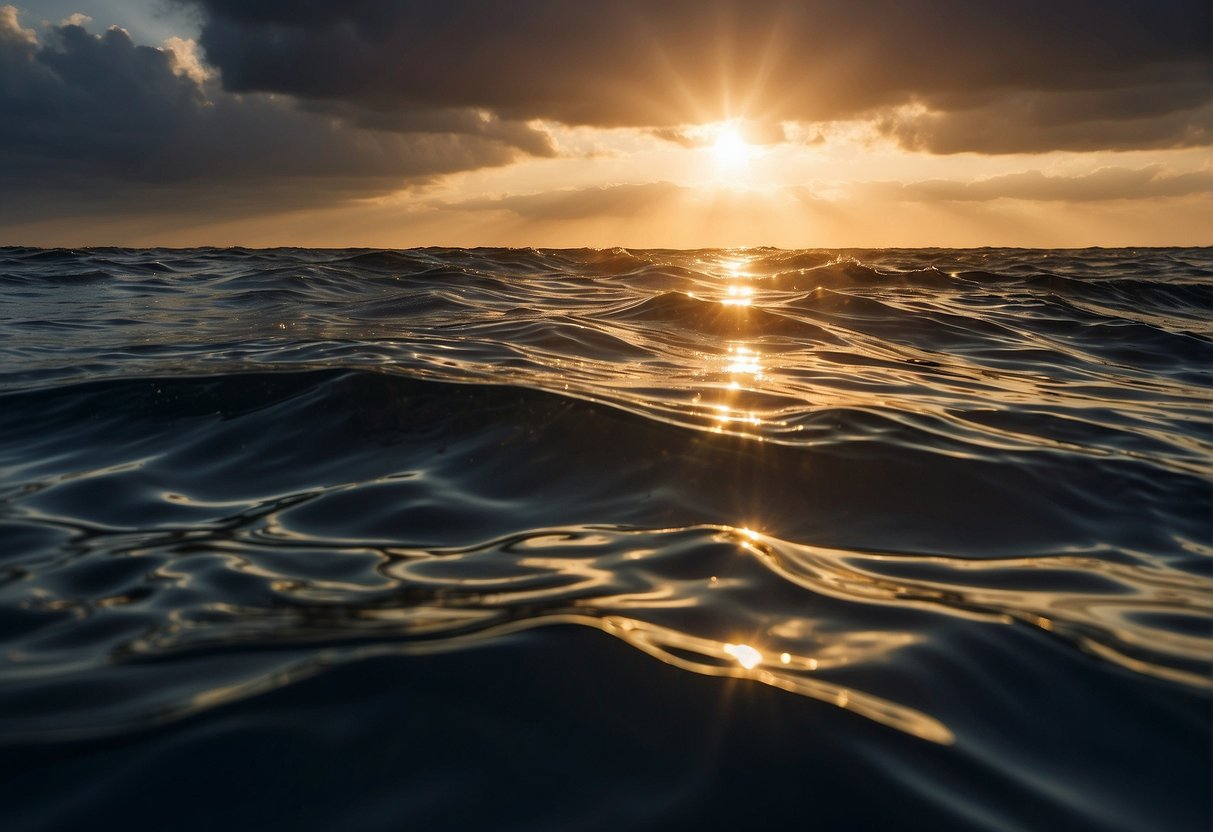
Paddlers should also consider kayak and gear selection, as they can contribute to a smooth experience in varying weather conditions. For instance, using kayaks with better tracking capabilities or selecting suitable attire for wet and cold conditions can make a significant difference. Lastly, cultivating navigational skills will help kayak enthusiasts to stay on course and avoid potential hazards posed by changing weather conditions.
Key Takeaways
- Assessing weather conditions is crucial for a safe and enjoyable kayaking tour.
- Appropriate kayaking equipment and attire can greatly enhance the experience in varying weather conditions.
- Strong navigational skills can help kayakers to stay on course and avoid hazards.
Understanding Weather Conditions
Interpreting Weather Forecasts
When planning a kayaking tour, a reliable weather forecast is crucial to ensure safety and enjoyment. Forecasts provide important information about wind speed, wind direction, air temperature, and water temperature. It is essential to always monitor the weather and adjust your plans accordingly. There are several weather apps available for kayakers to get up-to-date information about weather conditions.
- Wind Speed and Direction: Wind significantly affects kayaking conditions. Light winds (5-10 knots) are favorable for casual kayakers, while stronger winds can be challenging for inexperienced paddlers. Monitoring wind direction is important for efficient paddling and avoiding unfavorable conditions.
- Air and Water Temperature: Ideally, air and water temperatures should be around 70 degrees for comfortable kayaking. Colder temperatures require appropriate gear to stay warm and avoid hypothermia.
- Wave Height and Interval: Higher waves and shorter intervals can make paddling difficult and potentially dangerous, especially for novice kayakers. Check the wave forecasts to ensure suitable kayaking conditions.
Factors Affecting Kayaking Weather
Several factors can affect the weather conditions during a kayaking tour, making it crucial to understand and take them into account when planning your trip.
- Time of Year: Seasonal changes bring varying weather conditions. Spring and summer months typically offer warmer and more stable weather, while fall and winter present more extreme temperature fluctuations and unpredictable conditions.
- Geographical Location: Coastal and inland areas have different weather patterns affecting kayaking. Coastal regions are more prone to changes in wind and wave conditions, whereas inland areas may experience more stable conditions.
- Weather Patterns: Global and local weather patterns, such as La Niña and El Niño, can significantly impact regional weather conditions. Research the area’s climate history and any active patterns to better plan your kayaking tour.
To summarize, understanding weather conditions is fundamental for a safe and enjoyable kayaking experience. Keep a close eye on weather forecasts, consider the factors affecting kayaking weather, and always be prepared for changing conditions throughout your adventure.
Kayak and Gear Selection
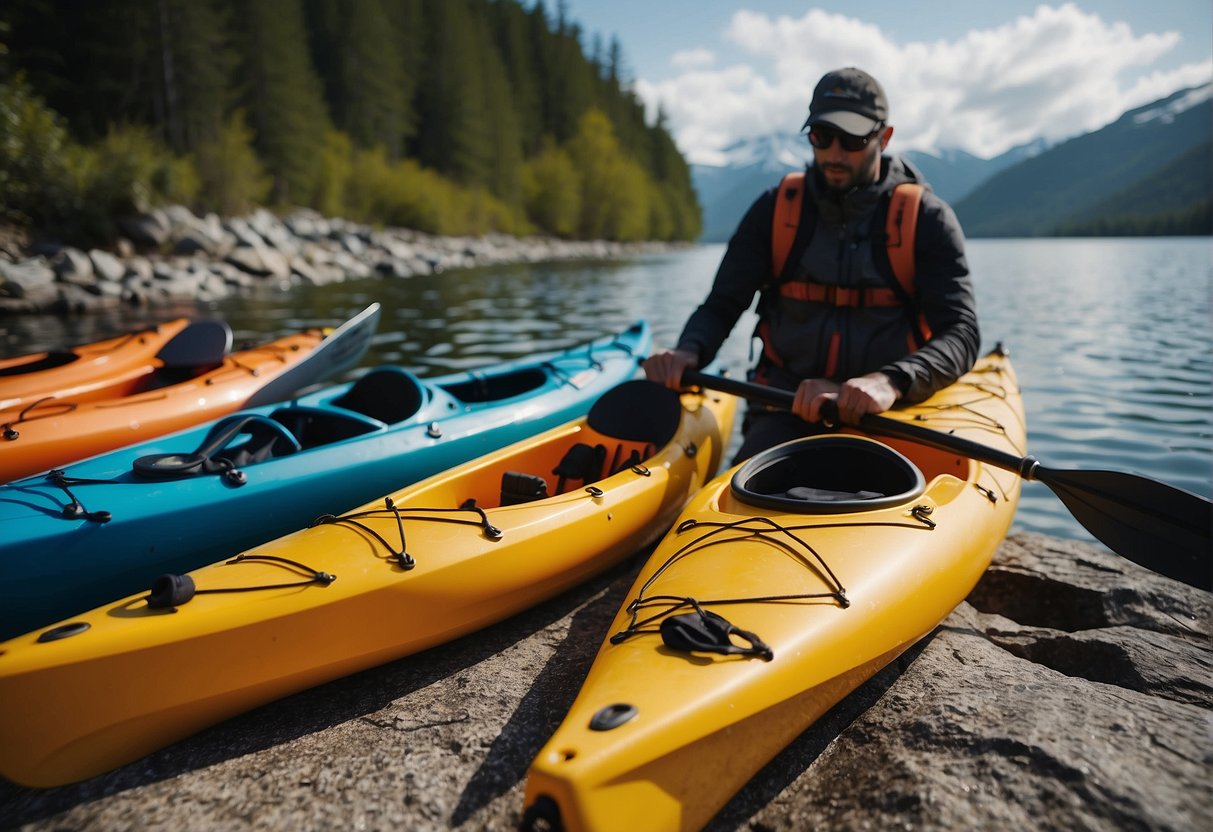
Choosing The Right Kayak
Selecting the appropriate kayak for your paddling adventure is crucial to ensure a safe and enjoyable experience. Weather conditions play a vital role in determining the type of kayak you should use. For instance, if you plan to paddle in calm, flat waters, a sit-on-top or recreational kayak is ideal. However, if you’re venturing into rough waters or unpredictable weather conditions, a sea kayak or touring kayak equipped with a rudder or skeg will provide better stability and control.
When evaluating the size and shape of the kayak, consider factors like your skill level, the water conditions, and the type of paddling you’ll be doing. For example, wider and shorter kayaks provide more stability, while longer, narrower kayaks offer better speed and tracking in challenging weather conditions. Keep in mind, accommodating for your body size and weight is essential to ensure a comfortable fit and good weight distribution.
Essential Kayaking Gear
The right gear is essential for a safe and enjoyable kayaking experience, especially in varying weather conditions. Here’s a list of critical pieces of equipment:
- Paddle: Selecting the proper paddle is crucial. Make sure it’s the correct length for your kayak’s width, your body size, and paddling style. A carbon-fiber paddle is lightweight and offers better energy transfer, while a fiberglass or aluminum paddle may be a more budget-friendly option.
- Personal Flotation Device (PFD): A PFD is a must-have for every kayaker. Ensure that it’s Coast Guard approved and fits comfortably, allowing for a full range of motion when paddling.
- Spray Skirt: In colder or wet conditions, a spray skirt can keep water out of the cockpit, keeping you warm and dry. It’s also useful during rough water conditions to prevent water from entering the kayak.
- Dry Bag: A dry bag is essential for keeping your belongings safe and dry during your kayaking trip. Choose one made of durable, waterproof material and ensure it seals securely.
- Clothing: Dress appropriately for the weather to regulate your body temperature and stay comfortable. Opt for moisture-wicking, quick-drying materials and layer them to adapt to changing conditions. Don’t forget a hat, sunglasses, and sunscreen, even in cooler weather.
Remember, kayaking in varying weather conditions requires some additional gear for safety and comfort. This might include items like a bilge pump, safety whistle, towline, paddle float, and navigation equipment such as a compass or GPS. Your gear selection will depend on your specific needs and the environment you’ll be paddling in, so prioritize accordingly and stay prepared.
Safety First
Personal Flotation Devices
Wearing a Personal Flotation Device (PFD) is the most critical aspect of kayaking safety. A well-fitted PFD ensures that you remain afloat in case you capsize or fall into the water. There are different types of PFDs available, so make sure to choose the right one for the specific kayaking activity you’re participating in. As an added safety measure, attach a whistle to your PFD so that you can call for help in an emergency.
Weather-Related Safety Precautions
Kayaking in adverse weather conditions can be dangerous. To ensure your safety, follow these weather-related safety precautions:
- Check the weather forecast: Before embarking on a kayaking tour, always check the local weather forecast. High winds, thunderstorms, and heavy rain can make kayaking extremely difficult and unsafe.
- Know the safe wind speed: In general, winds over 15 knots (about 17 miles per hour) can make kayaking difficult and unsafe. High winds can cause poor visibility, choppy waters, and difficulty in navigation.
- Dress appropriately: Dressing according to the weather is essential. In cold weather, wear layers to stay warm, and opt for quick-drying clothes. Exposure to the sun can lead to heat stroke, so wearing a hat and applying sunscreen is vital.
- Be prepared for changes in weather: Weather can change quickly, so always keep an eye on the sky and be prepared to head back to shore if conditions worsen.
Self-Rescue Techniques
Being able to rescue yourself in case of an emergency is crucial. Some key self-rescue techniques include:
- Re-entry: If you capsize, it’s important to know how to re-enter your kayak safely. Practice the various re-entry methods, such as scramble re-entry and paddle float re-entry, to ensure you’re prepared for any situation.
- Eskimo roll: An Eskimo roll is a maneuver used by kayakers to right an overturned kayak without exiting the boat. Learning this skill can help you quickly recover from a capsize and continue your journey.
- Towline usage: A towline can be a valuable piece of safety equipment in case you need to be towed by another kayaker or rescue boat. Ensure you know how to use one properly and always carry it with you.
By following these safety-first guidelines, you’ll be well-equipped to enjoy a safe and enjoyable kayaking experience.
Dressing for Success

Importance of Layers
When planning a kayaking tour, it’s crucial to dress appropriately to ensure comfort and safety during your adventure. One key aspect of dressing for kayaking is understanding the importance of layers. Layers allow you to regulate your body temperature, providing flexibility when facing changing weather conditions during a kayaking trip. Dressing in layers consists of a base layer, a mid layer, and an outer layer.
- Base layer: This is the layer closest to your skin, and it should be made from moisture-wicking fabric to keep you dry and comfortable. Depending on the weather conditions, options include short-sleeved or long-sleeved synthetic tops or long underwear.
- Mid layer: For colder conditions, a thick fleece layer can be added over the base layer for additional insulation.
- Outer layer: A waterproof and windproof outer shell, such as a drysuit, should be worn to protect against wind, rain, and cold temperatures.
Selecting Proper Materials
When choosing clothing for kayaking, always opt for materials that are quick-drying and have moisture-wicking capabilities, such as synthetic fabrics like polyester or nylon. Avoid cotton, as it absorbs water and takes a long time to dry, which can make you colder and wetter during your trip. Light and breathable materials will provide you with maximum comfort during your kayaking adventure.
Wetsuit Vs Drysuit
When kayaking in cold weather or cold water conditions, the choice of a wetsuit or a drysuit can make a significant difference in your overall experience. Here’s a quick comparison:
- Wetsuit: A wetsuit is made from neoprene, which traps a thin layer of water between your body and the suit, thereby insulating you from the cold while allowing water to enter the suit. Wetsuits are a popular choice for kayaking in moderately cold water conditions, providing a good balance between warmth, flexibility, and affordability.
- Drysuit: A drysuit, on the other hand, is a completely waterproof suit that keeps you dry by sealing at the wrists and ankles. It is typically more expensive and less flexible than a wetsuit but provides better protection from cold water, making it the preferred option for extended kayaking trips, colder water temperatures, and harsh weather conditions.
In summary, when preparing for a kayaking tour, dressing appropriately and understanding layering will ensure a comfortable and enjoyable experience. By selecting proper materials, considering weather conditions, and choosing between a wetsuit and a drysuit, you’ll be well-prepared for any kayaking adventure.
Paddling Techniques for Different Conditions
Managing Strong Winds and Currents
When kayaking in strong winds and currents, it is essential to maintain control of the kayak by using proper paddling techniques. One key element to maintaining stability in these conditions is keeping your body centered and balanced. Distribute your weight evenly between your hips and feet, engaging your core muscles for better balance. Utilize a smooth, fluid motion when paddling to navigate windy conditions efficiently, as described on AKAYAK.NET.
Some helpful tips for managing strong winds and currents include:
- Angle your boat: Position your kayak at a slight angle into the wind or current to maintain control.
- Paddle in sync: If kayaking with others, paddle in sync for better control and stability.
- Use eddies: Avoid battling the current directly; instead, use eddies to maintain position and make forward progress.
- Stay low: Crouch in the kayak, reducing your center of gravity, to improve stability.
Navigating Waves and Rapids
To tackle waves and rapids, kayakers need to adjust their paddling styles. In these conditions, it is essential to be aware of your surroundings and adapt accordingly. Here are some techniques to help you navigate through waves and rapids:
- Stance: Keep your knees bent and stay flexible, allowing your body to absorb the motion of the waves.
- Paddle strokes: Use efficient strokes like the forward sweep and the back sweep to maneuver quickly and maintain control.
- Bracing: When encountering a large wave or rapid, practice the low brace and high brace techniques to prevent capsizing.
- Lean into waves: Leaning slightly into waves or rapids can help keep the kayak stable.
Remember that when kayaking in different weather conditions, it’s crucial to be well-prepared. Wear appropriate clothing, have the proper gear, and ensure your skills are up to the task. As mentioned in River Rider, being informed on how to safely enjoy kayaking in various conditions is fundamental, and it ensures an enjoyable experience on the water.
Temperature’s Impact
Water Temperature Considerations
When planning a kayaking tour, it is essential to consider both air and water temperatures. Optimal conditions for kayaking involve air and water temperatures of about 70 degrees. In colder water temperatures, below 70°F (or 21°C), a submerged body can experience cold shock or even hypothermia, impacting breathing, blood pressure, heart rate, and motor functions.
Here’s a table showcasing different water temperature ranges and the associated risks:
| Water Temperature Range | Risk Level |
|---|---|
| 70°F (21°C) and above | Ideal |
| 50°F – 70°F (10 – 21°C) | Moderate |
| Below 50°F (10°C) | High |
Preventing Hypothermia
To prevent hypothermia and ensure a safe kayaking experience, it’s crucial to wear appropriate gear, especially in cold water temperatures. Some essential items include:
- Wetsuits or drysuits: These garments provide insulation and can help protect your body from the cold.
- Neoprene gloves and booties: These items can help maintain warmth in your extremities, which are often the first to get cold.
- Layering: Wearing moisture-wicking, quick-drying base layers under your wetsuits or drysuits can provide additional insulation and help regulate body temperature.
- PFD (Personal Flotation Device): Wearing a PFD can help reduce the risk of drowning if you capsize, especially in cold water where hypothermia can impair motor function and decision-making.
By understanding the risks associated with different water temperatures and taking proper precautions to prevent hypothermia, kayakers can enjoy their outdoor adventures while maintaining safety and comfort.
Planning Your Kayaking Trip
Choosing Your Location
When planning a kayaking trip, the first step is to choose a suitable location based on your skill level and the specific interests you might have, such as wildlife watching or coastal exploration. Research the area thoroughly, considering factors like water conditions, tide patterns, and potential hazards. It’s a good idea to consult local authorities and experienced kayakers for advice on the best places to paddle.
Timing and Weather Patterns
In addition to selecting a suitable location, attention should be paid to timing and weather patterns. Ideal conditions for kayaking include wind speeds of 10 knots or less and temperatures of around 70 degrees Fahrenheit. Tides and tidal patterns are crucial for those planning to embark on coastal kayaking trips. Several weather applications can be useful for checking the tides, wind, and other relevant factors.
When planning your route, be mindful of the wind direction. Paddling into the wind when going out and in the direction of the wind when coming back can make your trip more manageable. If you decide to paddle in colder weather, wearing appropriate gear, such as warm clothing, a hat, and gloves, is crucial for staying comfortable during your excursion.
Before embarking on your adventure, create a detailed float plan, including information like your planned departure and return times, general route, and safety measures. Share this plan with friends, family members, or local authorities to ensure your whereabouts are known in case of an emergency.
Lastly, always prioritize safety. If possible, paddle in a group, since teamwork and support can significantly diminish the risk associated with kayaking trips. Remember to carry a well-stocked first aid kit and be prepared for various weather conditions by packing essentials such as rain gear and extra layers. A proactive and safety-focused mindset will ensure a positive and memorable kayaking experience for everyone involved.
Wind Characteristics
Understanding Wind Speed and Direction
Wind is a crucial factor to consider when planning kayaking tours. Wind speed and direction can significantly impact a paddler’s experience on the water. It’s essential to be aware of the wind forecast before starting the trip. Higher wind speeds can lead to increased difficulty while paddling, especially for beginners.
Wind speed is typically measured in miles per hour (mph) or kilometers per hour (km/h). When referring to wind, a gentle breeze (4-7mph) is hardly noticeable for kayaking, while a moderate breeze (8-12mph) can start to create small waves. A strong wind (13-18mph) can make kayaking more challenging. It is generally inadvisable to kayak in winds stronger than 15-20 mph.
Wind direction also plays an essential role in kayaking, as it can determine the route and effort required to navigate specific areas. For example, paddling into a headwind (wind blowing directly against you) can be tiring and slow, while paddling with a tailwind (wind blowing from behind) can provide a helpful push. Crosswinds (wind blowing from the side) might require constant adjustment to maintain a straight course.
Effects of Wind on Kayaking
Wind can have various effects on the kayaking experience. Some of the critical impacts include:
- Wave formation: Strong winds can create dangerous waves and currents, making it difficult for paddlers to maintain control of the kayak.
- Capsizing risk: As wave height and frequency increase, the chances of capsizing also rise, especially for inexperienced kayakers.
- Paddling effort: Strong winds, particularly headwinds, can make paddling more exhausting and physically demanding.
- Navigation: In windy conditions, maintaining a straight course can become challenging due to the constant need to adjust and correct the kayak’s direction.
When planning a kayaking tour, it’s essential to consider the wind forecast to ensure safety and enjoyment. Pay attention to wind speed and direction, and adjust the plans accordingly. Always be prepared for changes in weather conditions to avoid unnecessary risks.
Water Conditions
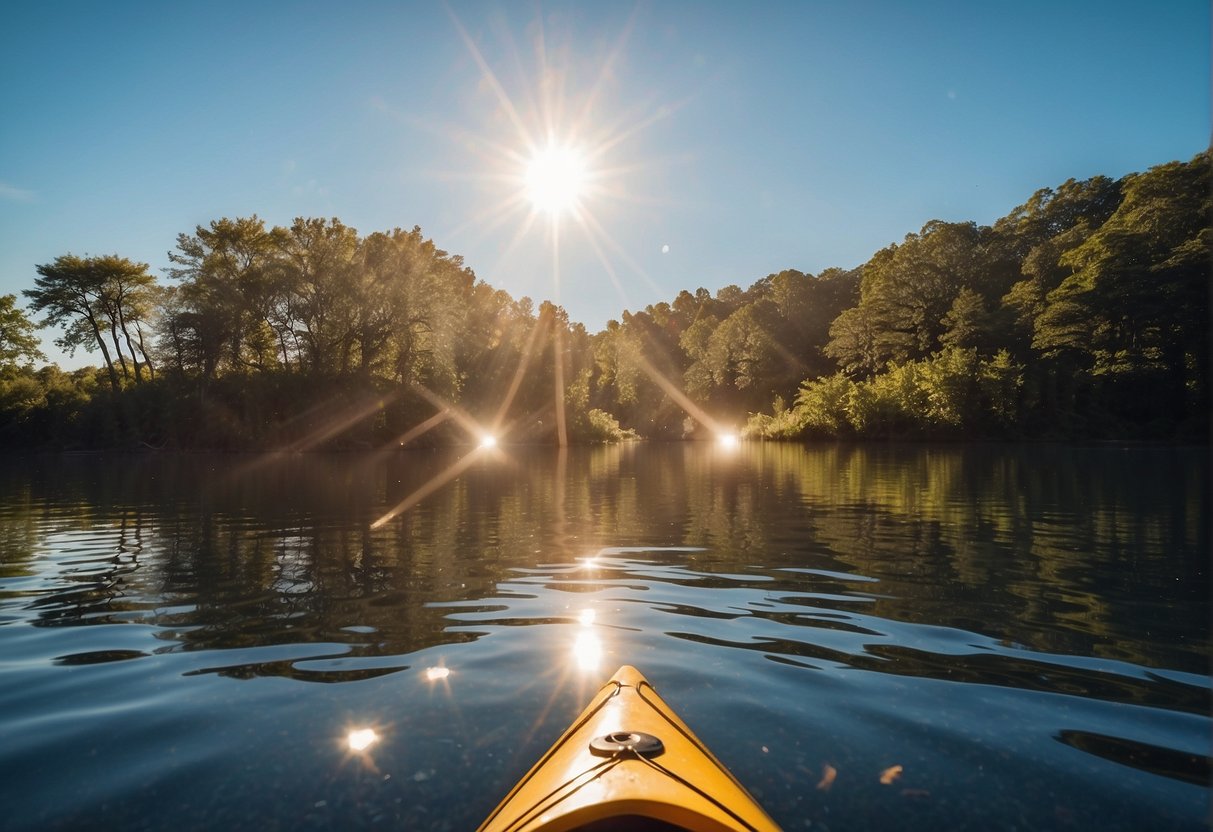
Reading Water Flow and Tides
When planning a kayaking tour, it is essential to understand and monitor water conditions such as currents, flow rate, and tides. Optimal kayaking conditions generally include air and water temperatures of about 70 degrees. To get a better grasp of water flow and tides, consulting local tide charts and flow rates is an excellent first step. Being aware of the tidal cycle allows you to plan your trip accordingly and avoid being stuck in shallow water or strong currents.
Currents, which are primarily caused by tides and wind, can significantly affect your kayaking experience. Fast currents can make maneuvering difficult, while slow currents can make paddling tedious. Therefore, it is important to gauge the kayaking environment and avoid overestimating your skill level.
Hazards in the Water
In addition to understanding water conditions, it is crucial to identify and prepare for potential hazards in the water. These hazards can include rocks, submerged objects, and large waves, which can quickly turn a peaceful kayaking trip into a dangerous situation. To avoid unexpected accidents, always be cautious and respect the power of water.
One way to mitigate risks during your tour is by monitoring the wave height. Kayaking in choppy water with high waves risks capsizing your kayak, which can be dangerous, especially in colder water temperatures. Stay informed of weather conditions and look for any alerts in your selected kayaking area.
In summary, being knowledgeable about water conditions, including currents, flow rate, tides, and hazards, is crucial for a safe and enjoyable kayaking experience. Thorough preparation and monitoring of weather conditions can significantly impact the success of your kayak tour.
Navigational Skills

Understanding Tidal Patterns
When planning a kayaking route, it’s crucial to have a clear understanding of tidal patterns. Tides play an important role in kayaking and can affect paddling conditions, such as the speed and direction of currents. Familiarizing oneself with local tide charts can help in anticipating changes in water levels and currents during a kayaking tour. These charts provide valuable information on high and low tide times and height differences, allowing kayakers to safely navigate through varying water conditions. In addition, understanding tidal patterns can help avoid potential hazards, such as exposed rocks, reefs, or strong whirlpools.
Using Weather and Navigation Tools
Equipping oneself with weather and navigation tools is essential for a safe and enjoyable kayaking tour. Properly utilizing these tools can help kayakers anticipate and prepare for weather changes, including sudden shifts in wind and waves that may impact their route.
There are several essential tools that kayakers should be familiar with to navigate effectively. Some of them include:
- GPS devices: A Global Positioning System (GPS) device can help kayakers accurately determine their position and map their route, even in foggy or low-visibility conditions.
- Marine charts and maps: Along with GPS devices, kayakers should carry detailed marine charts and maps that display water depth, shoreline features, and potential hazards that may be encountered on their chosen route.
- Compass: A reliable compass is necessary to help determine the direction of travel, especially in remote or unfamiliar areas where electronic devices may fail or lose signal.
- Weather radio or app: By staying informed about current and forecasted weather conditions, kayakers can make informed decisions regarding their route and adjust plans if necessary. Weather radios or mobile apps offer real-time updates on crucial weather information, such as wind speed, wave height, and storm warnings.
In conclusion, mastering navigational skills is an essential part of kayaking tours. By understanding tidal patterns and utilizing appropriate weather and navigation tools, kayakers can ensure they have a safe and enjoyable experience on the water.
Environmental Awareness

Recognizing Potential Weather Shifts
Before embarking on a kayaking tour, it is essential to be aware of the various weather conditions that can affect your paddling experience. Heavy rain, thunderstorms, and lightning can pose potential hazards and impact visibility during your kayaking adventure.
One way to anticipate potential weather shifts is by regularly monitoring weather forecasts and consulting local authorities for information about the area you plan to kayak in. Pay attention to the formation of clouds, as they can serve as indications for upcoming weather changes. Additionally, be mindful of changes in wind patterns and the presence of extreme UV rays, which can affect your health and the overall kayaking experience.
Preparing for Extreme Weather Conditions
Proper preparation is crucial when dealing with extreme weather conditions during a kayaking tour. To ensure a safe and enjoyable experience, consider the following steps:
- Conduct thorough research on the location, including potential hazards and historical weather patterns.
- Check weather forecasts regularly to be aware of any possible changes that may affect the kayaking tour.
- Pack appropriate gear, such as waterproof clothing, sunscreen, and sunglasses to protect against heavy rain, intense sunlight, and UV rays.
- Carry with you a form of communication device, such as a weather radio or smartphone, to receive any important weather updates.
- Develop a contingency plan in case of sudden weather shifts, which may involve alternative routes or cutting the tour short if necessary.
By staying informed about potential weather changes and understanding how certain conditions, like heavy rain or thunderstorms, can affect your kayaking experience, you can ensure a safer and more enjoyable outdoor adventure.
Physical Preparedness and Comfort
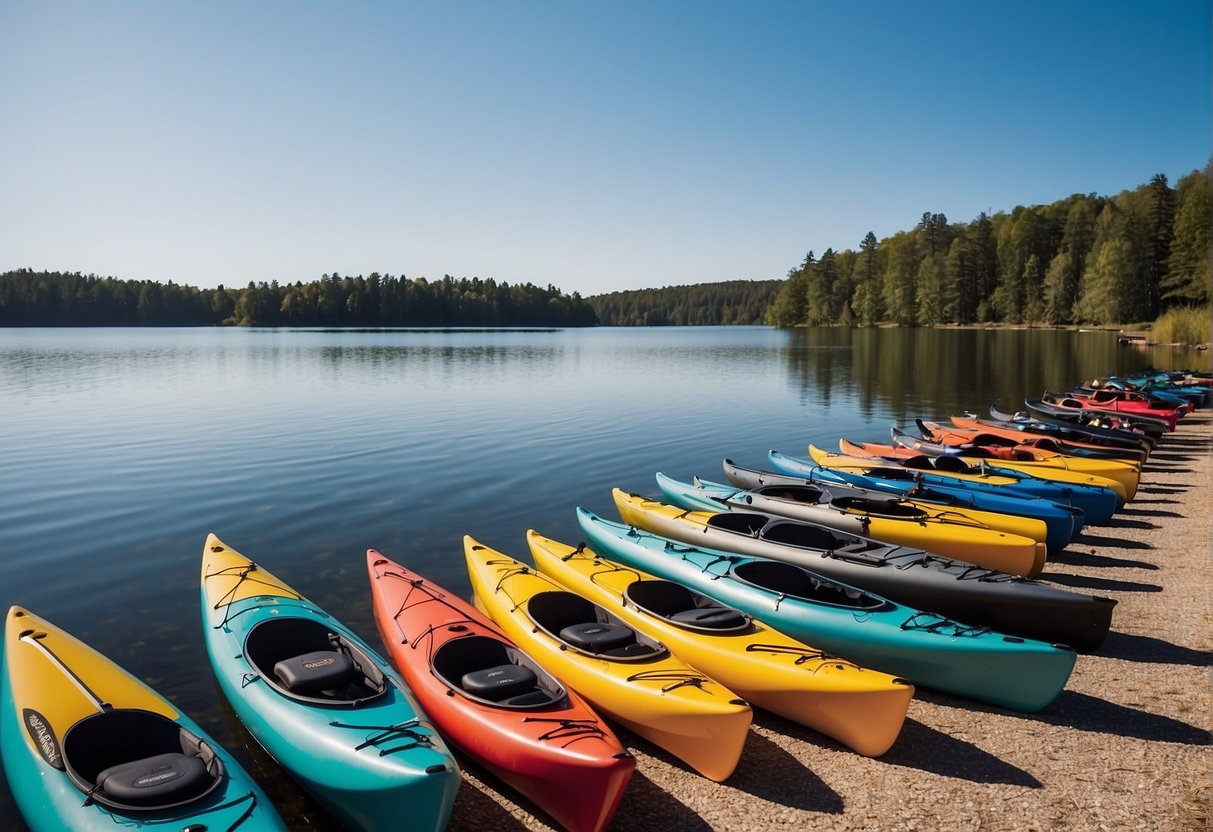
Staying Hydrated and Energized
Staying hydrated and energized during a kayaking tour is crucial for maintaining comfort and ensuring safety. Drinking water throughout the tour helps combat dehydration and fatigue caused by physical exertion and exposure to the elements. It’s a good idea to bring a water bottle or hydration system along with electrolyte drinks or energy gels to supplement hydration levels.
In addition to hydration, consuming snacks high in protein and complex carbohydrates can help maintain energy levels. Consuming energy bars, trail mix, or fruit are excellent choices to keep up one’s strength during a kayaking tour.
Physical Conditioning for Safe Kayaking
Proper physical conditioning is important to safely handle the challenges presented by weather conditions during kayaking tours. Kayakers should be aware of their personal limits and not push themselves beyond what their bodies can handle. Regular aerobic exercise, strength training, and flexibility exercises can help improve overall fitness and preparedness for kayaking.
| Training Areas | Suggested Exercises |
|---|---|
| Aerobic Exercise | Swimming, Running |
| Strength | Resistance Training |
| Flexibility | Yoga, Stretching |
During colder weather, paddlers should be prepared to deal with cold shock if they fall into the water. Wearing appropriate clothing such as wetsuits, drysuits, or insulating layers can help stay warm and dry, minimizing the risk of cold shock and hypothermia.
In conclusion, being physically prepared and paying close attention to hydration, energy levels, one’s personal limits, and appropriate clothing will ensure a safe and enjoyable kayaking experience, even in challenging weather conditions.
Kayaking in Cold Weather

Understanding the 120-Degree Rule
The 120-degree rule is an essential guideline to follow when kayaking in cold weather. It states that if the combined air and water temperature is less than 120 degrees Fahrenheit, additional precautions are necessary to ensure safety while on the water1. For instance, if the water temperature is 50°F and air temperature is 40°F, the total would be 90°F, which means extra safety measures should be taken.
| Air Temperature | Water Temperature | Combined Temperature |
|---|---|---|
| 40°F | 50°F | 90°F |
| 50°F | 60°F | 110°F |
| 60°F | 80°F | 140°F |
Some of the risks associated with kayaking in cold weather include hypothermia and cold water shock, which can be life-threatening2. To minimize these risks, it is crucial to wear proper clothing and equipment, such as wetsuits, drysuits, and immersion gear3.
Special Considerations for Cold-Weather Kayaking
- Layered clothing: Layering is vital to keep warm in cold weather. Start with a moisture-wicking base layer, add a thermal insulation layer, and finish with a waterproof outer layer4.
- Wetsuit or drysuit: Choose between a wetsuit or a dry suit based on the water temperature and your personal preferences. While both provide insulation and protection, drysuits are generally recommended for colder waters as they keep you dry and warmer.
- Head and hand protection: Wear a neoprene hood, gloves, and kayak booties to keep your extremities warm and reduce heat loss5.
- Paddle with a partner: In cold weather, it’s always better to paddle with a partner or a group for safety and assistance in case of emergencies.
- Bring warm drinks: Take a thermos with hot drinks like coffee or tea to warm yourself up during breaks and prevent your body temperature from dropping too much6.
By understanding the 120-degree rule and taking special considerations for cold-weather kayaking, you can safely enjoy the serenity and unique opportunities that paddling in cold conditions offers.
Footnotes
- https://www.watersportswhiz.com/winter-kayaking-cold-weather/ ↩
- https://outdoorskilled.com/when-is-it-too-cold-to-kayak/ ↩
- https://kayakconnection.com/winter-kayaking/ ↩
- https://thesportingedge.net/winter-kayaking/ ↩
- https://kayakingventure.com/9-tips-for-kayaking-in-the-cold-weather/ ↩
- https://www.watersportswhiz.com/winter-kayaking-cold-weather/ ↩
Frequently Asked Questions
What wind speed is considered unsafe for kayaking tours?
Wind speed can significantly impact the safety and enjoyment of kayaking tours. Generally, a wind speed over 15 miles per hour (24 km/h) may become challenging for inexperienced kayakers. In extreme cases, wind speeds above 25 miles per hour (40 km/h) present a higher risk for even experienced paddlers, increasing the chances of capsizing or being blown off course.
Which weather conditions are ideal for a safe kayaking experience?
The best weather conditions for kayaking include light winds, mild temperatures, and clear skies, which allow for better visibility and easier navigation. Ideally, winds should remain below 15 miles per hour, and temperatures should be comfortable for the kayaker’s clothing and gear.
At what point does temperature become a safety concern for kayakers?
Temperature becomes a safety concern when it is too cold or too hot, risking hypothermia or heat exhaustion, respectively. Cold water temperatures pose a higher risk, especially if the kayaker is not wearing appropriate gear like a dry suit. Temperature can also be a concern in hot weather when kayakers risk overheating and dehydration.
How does inclement weather impact the safety of kayaking tours?
Inclement weather, such as heavy rain, thunderstorms, or fog, can create challenging and dangerous conditions for kayaking tours. These conditions reduce visibility, affect the water’s surface, and increase the risk of capsizing. It is essential to check the weather forecast before going on a kayaking tour and postpone or cancel it if necessary.
Is it safe to embark on a kayaking tour during stormy conditions?
Embarking on a kayaking tour during stormy conditions is not recommended. Storms can bring strong winds, heavy rain, lightning, and rapidly changing water conditions that pose significant risks to kayakers. It is essential to check the weather forecast before any kayaking tour and delay or cancel the tour if stormy conditions are expected.
What precautions should be taken when kayaking in windy conditions?
When kayaking in windy conditions, it is crucial to take certain precautions to ensure a safe experience. These include:
- Checking the weather forecast and planning the route with wind direction in mind.
- Choosing a sheltered area for kayaking, such as a protected bay or river.
- Using proper kayaking techniques, such as low-angle paddle strokes, to reduce wind resistance.
- Staying close to the shoreline and avoiding open water where winds may be stronger.
- Carrying safety equipment, such as a personal flotation device (PFD), bilge pump, and a signaling device.
- Kayaking with a group or experienced guide to help with navigation and assistance in case of any issues.
Conclusion
In the realm of kayaking, weather conditions play a significant role in the overall experience and safety of the activity. By taking into account factors such as wind speed, water conditions, and temperature, paddlers can make informed decisions to optimize their kayaking tours.
Kayakers should be mindful of ideal weather conditions when planning their trip, such as a wind speed of 10 knots or less, air and water temperatures around 70 degrees Fahrenheit, and favorable wind directions. Paddling into the wind when going out and with the wind when returning can make for a more enjoyable and safe trip.
Additionally, understanding how kayak design affects stability can help when selecting the best kayak for the conditions. Kayaks with a low profile and sleek hulls are generally less affected by strong gusts of wind, resulting in better control and stability on the water. Excellent tracking capabilities also help to maintain the desired course, especially in challenging wind conditions.
It is essential to stay updated on hazards and weather conditions before and during the kayaking tour. By being vigilant and informed, kayakers can avoid potential risks and create a safer and more enjoyable experience on the water.
In summary, a successful and safe kayaking tour hinges on the ability to understand and adapt to the various weather conditions that may arise. By paying close attention to wind, water, and temperature factors, along with selecting the appropriate kayak design, paddlers can confidently navigate and make the most of their time on the water.





